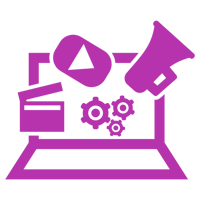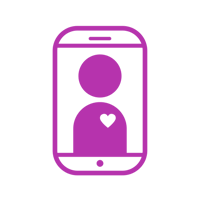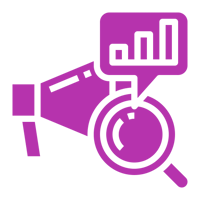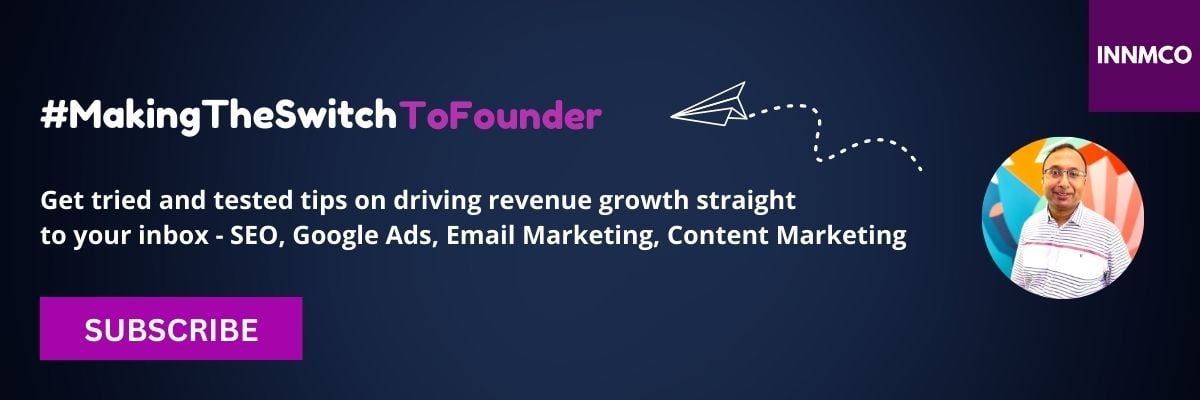8 ways to promote your business online
I wanted to build trust with my prospective buyer by addressing their needs at different stages in the buyer’s journey. I wanted to raise brand awareness and generate quality leads for my business.
I chose an inbound marketing approach to generate leads for my business. This approach is firmly rooted in attracting buyers by creating valuable content and experiences tailored for them.
In this blog, I share eight tried and tested ways to promote your business online and create a lead pipeline for your business.
Table of Contents
1. Create a digital marketing strategy
3. Create a content marketing strategy
6. Engage customers using emails
8. Integrated sales & martech stack
A digital marketing strategy is a plan for achieving specific goals using online channels. Before planning social media campaigns and ad campaigns, you need to:
1. Research your target audience.
2. Set meaningful goals (short term, medium term and long term).
The insights you learn about your target audience will help you guide them through each stage of the digital marketing funnel utilising the most effective tactics and media mix.

A media mix refers to the combination of digital channels you use to reach your goals and how you divide your budget among them. To select your media mix:
1. First review your existing media content to analyse gaps.
2. Based on your assessment, you will then decide which channels to focus on.
3. What content and campaigns to run on those channels and how to allocate your budget?
Most of your marketing budget may go into the awareness and consideration sections of your marketing funnel.
Once you have strategy in place, you can start creating content to run your campaigns to advance your marketing goals. These marketing goals must support movement of your target audience through the marketing funnel. Campaigns include everything from video messages, email templates, ads and banner images.
Lastly, create a plan to measure and analyse the results. This will let you know, how to improve in the future. In the next few sections, we will go through a few popular channels for improving your online presence - website, search, social and email.
2. Create a website
Create a website to inform your target audience on solutions you offer to address their needs and challenges. There are multiple content management systems (CMS) and website builders with little to no coding required to create a website. Most content management systems have drag and drop capabilities. The website designer can drag and drop page components used to design a web page.
Our digital marketing agency considered the below factors while shortlisting a CMS tool for our business:
1. Ability to log into one platform to manage websites, blogs, landing pages, forms, email marketing and leads.
2. Access to advanced CMS capabilities like marketing automation as the business grows.
3. CMS integration with the CRM. The CMS should have the capability to sent leads to the CRM.
4. CMS integration with email marketing software to nurture leads from website, blogs and landing pages.
5. Price of the CMS.
Read our blog ‘Why I chose an integrated sales and martech stack’ on how we chose our CMS platform.
Read our blog to learn more about my step by step process of building a website on HubSpot CMS.
3. Create a content marketing strategy
People consume content from the internet to find solutions to their problems. It’s important to have a deep understanding of your buyers and their buying journey. This will help you create useful content to address buyer needs and challenges at different stages of the buyer’s journey.

Key steps we utilised while creating a content marketing strategy for our business include:
1. Do buyer research. The buyer research will provide insights on how your target customer consumes content to address their needs and solve their challenges.
2. Identify which channels are most used by your target audience. This will enable you to find the right channels (search, social media, email, online directories, influencer marketing, word of mouth etc….) to create and distribute useful content (e.g. blog posts, guest posting) at the awareness stage, consideration stage or decision stage of the buyer’s journey.
3. Identify what content types (blogs, videos, webinars, events, trade shows etc.) resonate with your buyer personas. This will form the basis of your content marketing strategy. Create content using preferred content formats to generate more engagement from your content marketing efforts.
Read our blog to learn more about my step by step process of creating a blog in hubspot cms.
Read our blog ‘how to generate leads using hubspot forms?’ to learn how to setup gated information like white papers, templates, checklists using hubspot.
4. Be found in search
Once your website is up and running, it’s important to improve your website visibility in search. Most buyers begin the buyer’s journey through Google Search. Your web page content needs to be written in a way that includes keywords your target audience searches for. This increases visibility of your content in google search engine result pages.

Key steps we utilised while creating a SEO strategy for our search engine marketing agency include:
1. Create a business profile in google. Your services and contact details will be visible, when your target audience searches for your company.
2. Do competitor research. Identify keywords that your competitors are ranked for.
3. Do keyword research. Identify keywords that your users are using in their search queries.
4. Create content using keywords that you want to be ranked for.
5. Optimise on-page SEO factors including page url, title, headline, meta descriptions, first 100 words, internal links, external links and videos.
Another way to increase your visibility in search is by running Ads (Search Engine Marketing). Search Ads (via the Google Ads platform) will help you gain quick visibility with your target audience who are actively searching for solutions to address their needs and challenges.
Read our blog 'How to implement a SEO strategy for your website?'.
5. Publish consistently on social media
Create a social media marketing plan. Create and distribute content at places where your target audience frequents. Distribute content using social media channels to help build brand awareness for your business, product or service. Social media is one of the many ways to reach your target audience.

Key steps we utilised while creating a social media marketing plan for our digital marketing agency include:
1. Find out which social media accounts are used by your target audience. Utilise this medium to publish and promote your content with your target audience.
2. Write and post content pieces (e.g. blog posts, case studies) that addresses challenges that your target audience faces at different stages of their buying journey. This will drive traffic to your website.
3. Create a content calendar. Schedule content (e.g. blog posts, case studies) using social media scheduling tools. A few examples include Hootsuite, HubSpot, Buffer etc.
You can reach your target audience using organic social media and paid social media. Organic social media is any content that you can share for free on social media platforms. Paid social media is when organisations pay social media platforms (e.g. LinkedIn) for content to be shared with a specific target audience who may be interested in that content.
Linkedin’s advertising solutions (LinkedIn ads) enables organisations to amplify marketing objectives (brand awareness, lead generation). LinkedIn’s ad platform has a few different ad types to meet marketing objectives. This includes sponsored content, sponsored messaging, dynamic ads and text ads.
Sponsored content are ads that appear on your LinkedIn feed. These posts are marked as ‘promoted’. Sponsored messaging appears in your linkedin messages. These messages are marked as ‘sponsored’.
Dynamic ads are personalised ads. A few locations where dynamic ads appear include your linkedin home page or profile page. A text ad includes an image, headline and description. A few locations where text ad appears include your linkedin profile page or home page.
6. Engage customers using emails
Email marketing involves sending useful content via emails to prospective and current customers with the objective of increasing brand awareness, nurturing leads and converting leads. Create an email marketing strategy to engage your customers.
Your lead may not be ready to make a purchase. Engage your leads by creating and sending email campaigns at regular intervals, should they have opted to receive such information. A few email marketing tools to consider include Mailchimp, HubSpot etc.

Key steps we utilised while creating an email marketing strategy for our business include:
1. Segment your potential customers.
2. Use engaging content and content types preferred by your potential customers. Your leads will open and read your emails. This will also avoid your emails ending up in spam folders.
3. Keep your potential customers updated on the latest offers or insights that your company publishes.
4. Include call to actions that will prompt your potential customers to contact you.
7. Organise leads in a CRM
Find ways to organise leads generated from various digital marketing campaigns. Establish a customer database to organise your leads. A CRM platform (Customer Relationship Management) will enable you to organise and record the progress of your leads or opportunities.

You can organise leads by contacts, companies and deals:
1. Contacts: Add contacts to your CRM. Organise existing conversations with prospective customers. A centrally located contacts list in the CRM would help organise leads. The CRM helped me in organising leads and managing duplicates, as I started to generate leads from multiple sources such as website, blogs and landings pages.
2. Companies: Add company names your contacts work at. Pick a CRM that automatically pre-fills company details and logo from an external data source. This saves time, as you don’t have to manually enter this information in every company record.
3. Deals: Set up deals and deal stages. A deal is typically associated with a contact and a company. Deals and deal stages helped me track potential opportunities in my pipeline and how they are progressing towards completion.
Read our blog for more information on how to use hubspot crm? I share the features that I first started using in the hubspot crm. templates, checklists using hubspot.
Marketing technology or MarTech is software used by marketing teams to attract and retain customers. Marketing technology will help you maintain buyer personas, organise leads, segment leads and nurture leads.
A marketing technology stack will include tools for SEO/ SEM (e.g. Google search console, SEMrush), Social media management (e.g. Hootsuite, sproutsocial), Website/ CMS (e.g. HubSpot CMS hub, Wordpress, Drupal), email marketing (e.g. HubSpot Marketing hub, Mailchimp), graphic design (Canva) etc.
Sales tools will help you with sales forecasts, tracking opportunities and managing customer lifecycle in CRM.

It can become quite cumbersome to log into different tools for website management, landing page creation, lead generation and lead nurture. This creates information siloes. It becomes hard to get a single view of your customer’s interaction with your business. Trying to get this single view of your customer from multiple systems can take your valuable time away from marketing activities.
I explain this further in my blog post - why I prefer using an integrated sales and martech stack to power my sales and marketing needs.
Watch the below video on how to build an online presence for your business:
Conclusion
To conclude, entrepreneurs and business owners need to create a lead pipeline for their business. An online presence helps businesses of all sizes (including small businesses) irrespective of geographic market presence (including local businesses) to reach their target audience, increase brand awareness, generate leads and convert leads to paying customers.
Start by creating a digital marketing strategy for your business. Consider popular digital channels like website, search, social media and emails. Organise leads in a CRM. Choose an integrated sales and martech stack to minimise challenges associated with managing multiple systems.
Grow web traffic, leads & sales!
Written by Anees Misbahudeen
Founder & Digital Marketing Director, INNMCO
.png?width=200&height=125&name=Anees%20Misbahudeen%20-%20Company%20Profile%20(700%20%C3%97%20436%20px).png)
I help businesses grow web traffic, leads & sales. I am a digital marketing director specialising in SEO, Google Ads, email marketing & content marketing campaigns. I've supported the growth story of 30+ brands in software, financial services, automotive, manufacturing & B2B. I’ve 10+ years of digital marketing industry experience, as a founder, digital marketing strategist & consultant.
Subscribe to my monthly newsletter #MakingTheSwitchToFounder
.png?width=75&height=75&name=INNMCO%20Company%20Logo%20-%202025%20(700%20x%20700%20px).png)

.png)




